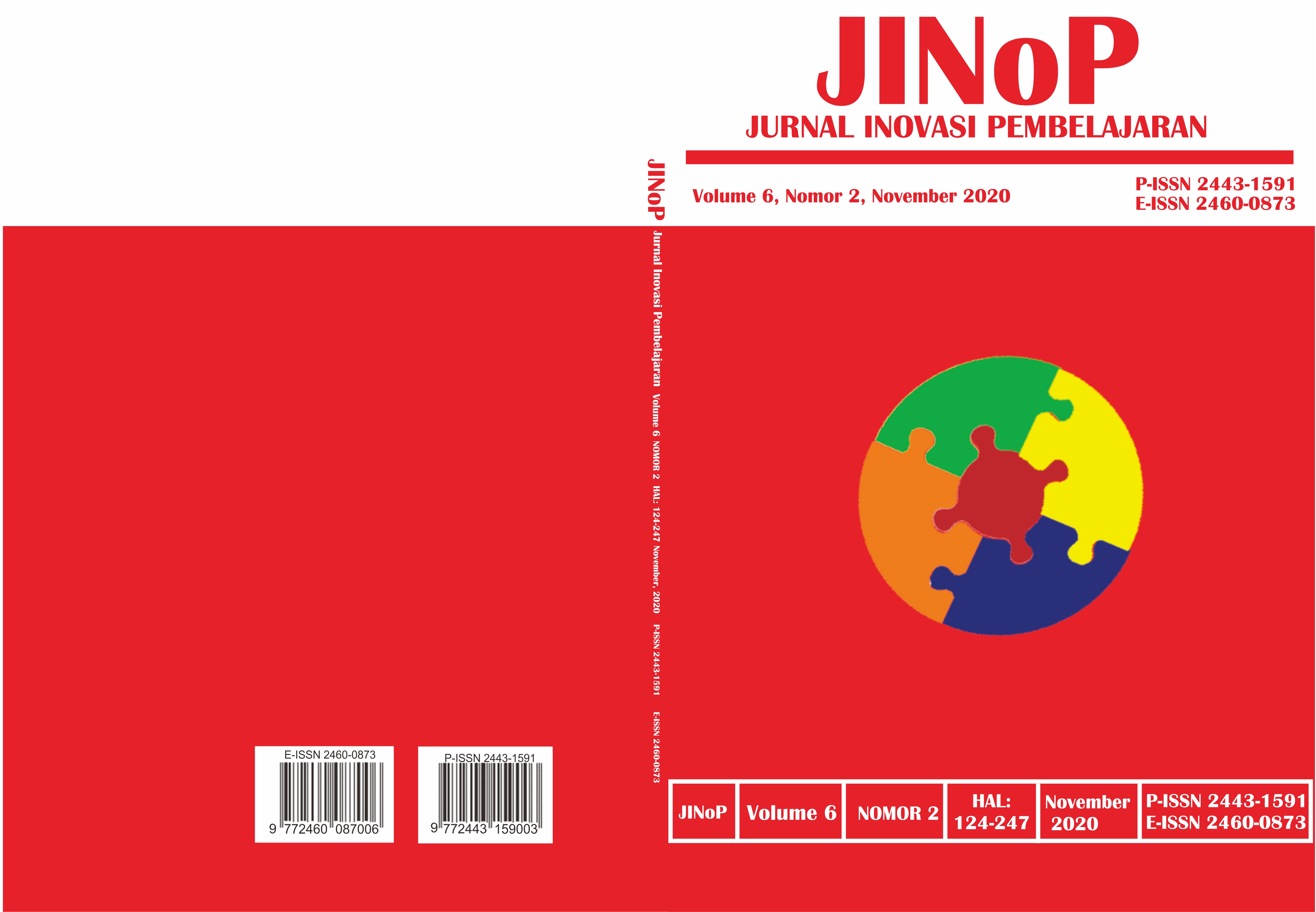Meningkatkan keaktifan siswa dalam mata pelajaran bahasa Indonesia dengan menggunakan pendekatan saintifik dalam kegiatan lesson study
DOI:
https://doi.org/10.22219/jinop.v6i2.7177Keywords:
Keaktifan Siswa, Lesson Study, Pendekatan SaintifikAbstract
Mata pelajaran bahasa Indonesia merupakan salah satu mata pelajaran yang sering diremehkan oleh para siswa. Akan tetapi, kenyataannya pada evaluasi akhir banyak ditemukan nilai terendah yang diperoleh siswa berasal dari mata pelajaran bahasa Indonesia. Penelitian ini bertujuan untuk meningkatkan keaktifan siswa pada mata pelajaran bahasa Indonesia. Subjek penelitian adalah 27 siswa kelas VII SMP Muhammadiyah 06 Dau Malang. Program lesson study ini dilakukan dalam 4 siklus dengan menerapkan pendekatan saintifik yang diimplementasikan melalui strategi pembelajaran inkuiri. Strategi tersebut berimplikasi pada pemakaian metode inkuiri, diskusi, dan kunjung kelompok. Hasil penelitian menunjukkan keatifan siswa dapat ditingkatkan. Peningkatan keaktifan siswa tersebut beriringan dengan tujuan pembelajaran dengan menggunakan pendekatan saintifk yang meliputi (1) menanya/menjawab teks prosedur, (2) menerapkan penulisan teks prosedur, dan (3) mengomunikasikan menanggapi teks prosedur. Berdasarkan hal tersebut dapat disimpulkan pemakaian pendekatan saintifik dalam kegiatan lesson study dapat meningkatkan keaktifan siswa dalam mata pelajaran bahasa Indonesia.
Kata kunci: keaktifan siswa, lesson study, pendekatan saintifik
Abstract
Bahasa Indonesia subject is one of the subjects that is often underestimated by students. However, it was found that the lowest scores obtained by students came from Indonesian subjects in the final evaluation. This research aimed to increase student activeness in Indonesian subjects by analyzing 27 research subjects on grade VII students of SMP Muhammadiyah 06 Dau Malang. This lesson study program was carried out in 4 cycles by applying a scientific approach through an inquiry learning strategy. This strategy implied the use of inquiry, discussion, and group visits methods. The results showed that student's activity could be improved. Increasing the activeness of students goes parallel with the learning objectives by using a scientific approach which includes (1) asking / answering procedure texts, (2) applying procedural text writing, and (3) communicating responding to procedural texts. Based on the result, it can be concluded that the use of a scientific approach in lesson study activities can increase student activeness in Bahasa Indonesia subjects.
Keywords: student activity, lesson study, scientific approach
Downloads
Downloads
Published
How to Cite
Issue
Section
License
Copyright (c) 2020 Setiawan et al

This work is licensed under a Creative Commons Attribution 4.0 International License.
Copyright Notice
Authors who publish with JINoP (Jurnal Inoasi Pembelajaran) agree to the following terms:
- For all articles published in the JINoP (Jurnal Inovasi Pembelajaran), copyright is retained by the authors. Authors give permission to the publisher to announce the work with conditions. When the manuscript is accepted for publication, the authors agree to the automatic transfer of the publishing right to the publisher.
- Authors retain copyright and grant the journal the right of first publication with the work simultaneously licensed under a Creative Commons Attribution 4.0 International License. that allows others to share the work with an acknowledgment of the work's authorship and initial publication in this journal.
- Authors are able to enter into separate, additional contractual arrangements for the non-exclusive distribution of the journal's published version of the work (e.g., post it to an institutional repository or publish it in a book), with an acknowledgment of its initial publication in this journal.
- Authors are permitted and encouraged to post their work online (e.g., in institutional repositories or on their website) prior to and during the submission process, as it can lead to productive exchanges, as well as earlier and greater citation of published work (See The Effect of Open Access).








